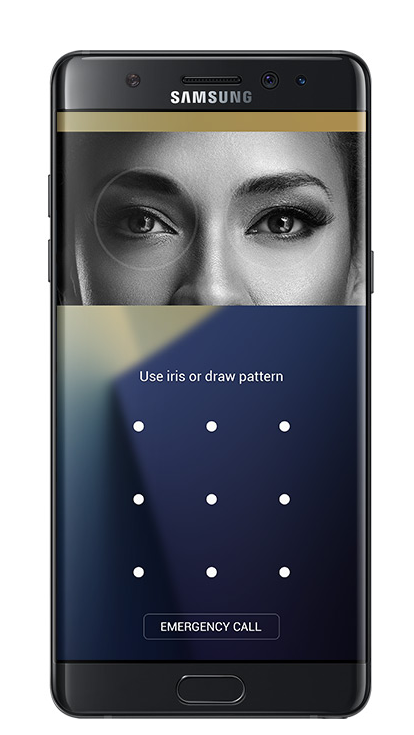The adoption of iris recognition features into Samsung’s flagship Galaxy Note 7 in New York last week caught market attention, users of the device can unlock their phones simply by peering into their smartphone displays, reported TechNews.
Samsung will be accelerating the introduction of iris recognition in mid-range smartphones, once production costs are lowered, said the company’s President of Mobile Communications Business CEO Dongjin Koh.
 |
|
Samsung flagship smartphone Galaxy 7 equipped with iris-reognition biometric features. (Photo courtesy of Samsung) |
The Samsung Galaxy Note 7 has added iris recognition features in the front camera for receiving users iris info for identification purposes. Iris recognition is faster, more accurate and securer than fingerprint recognition. Users only have to glance at the smartphone display to unlock their phones, other user identification features built in the phone include fingerprint recognition, and passwords to add phone security.
Iris recognition currently is only available in high-end flagship smartphones, but Samsung will apply the new bio-identification technology to mid-range phones once production costs are under control, said Koh. The company has a long term roadmap for developing iris recognition features, and invested in the technology for three years before using it in Galaxy Note 7. Compared to other biometric technologies, iris recognition is one of the safest and most effective biometrics.
Samsung’s iris recognition features have moved beyond user identification and is expanding into application programming interface (API) applications and other services, where it is working with financial institutes to adapt iris recognition features into online financial transactions.
Many people have the preconception that Android smartphones are less secure than iPhones, but the introduction of iris recognition in the Android-based Galaxy Note 7 is changing this stereotype.
If Samsung adapts iris recognition into its mid-range phones, it could create new demands for IR LED modules, based on LEDinside observations.












